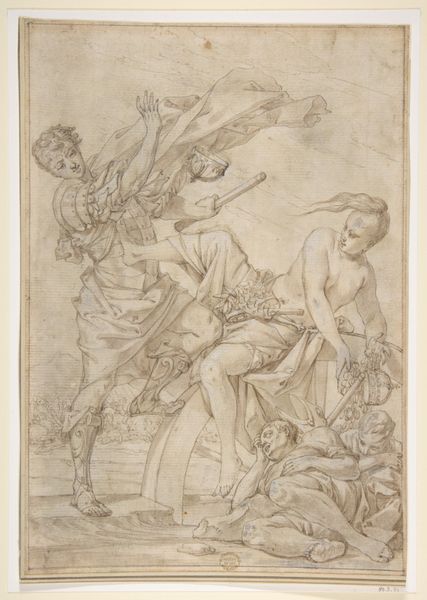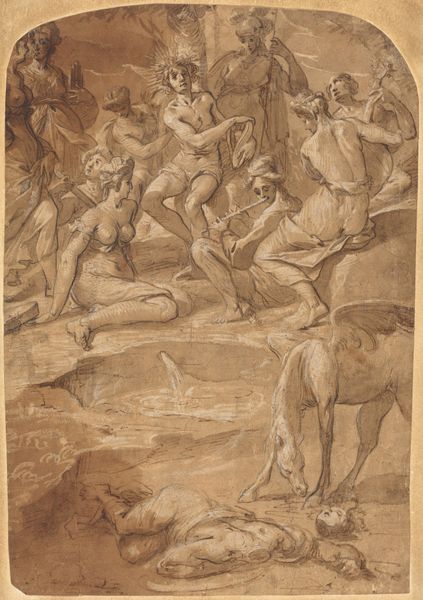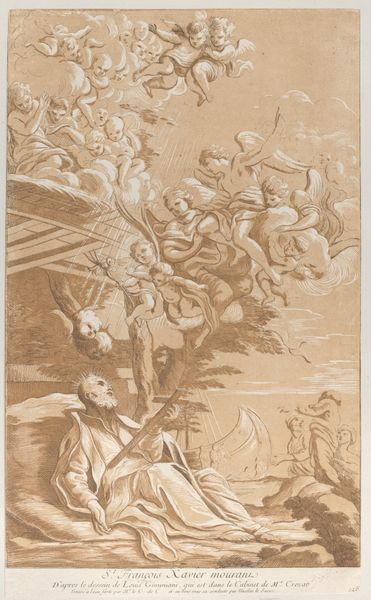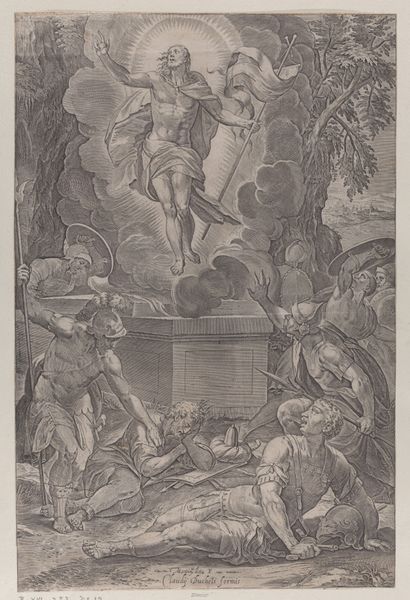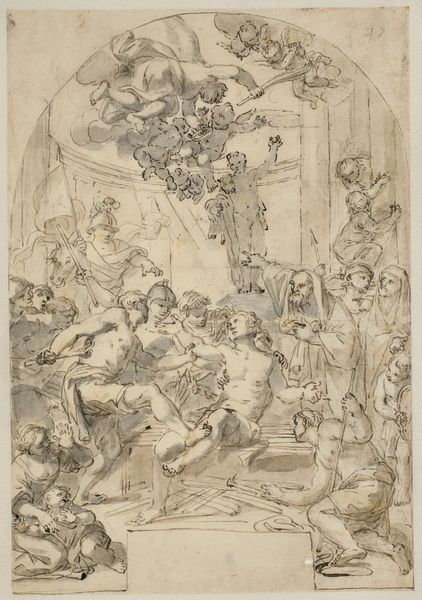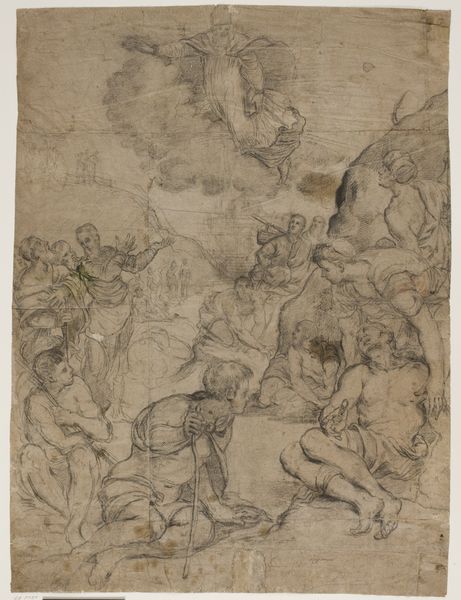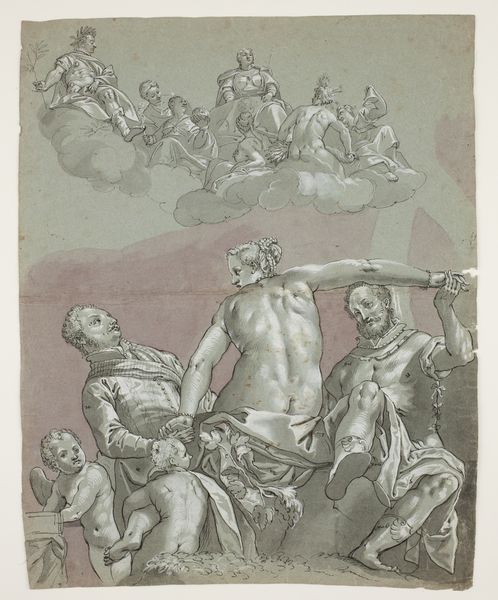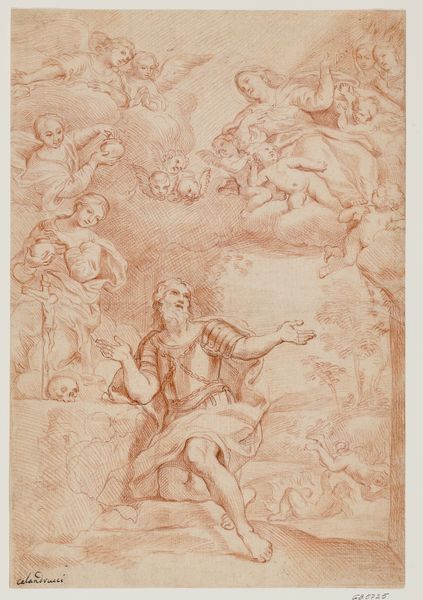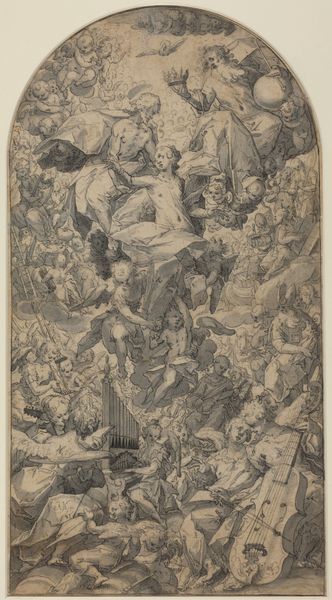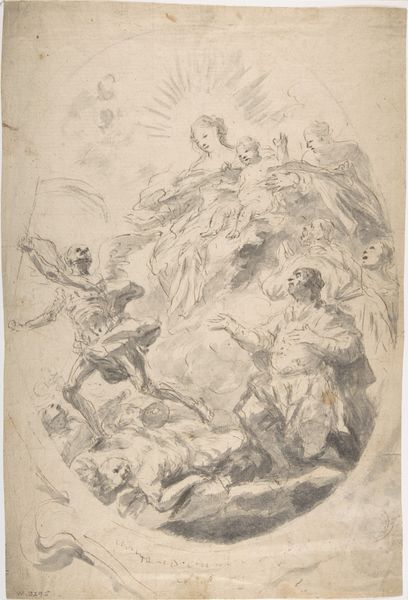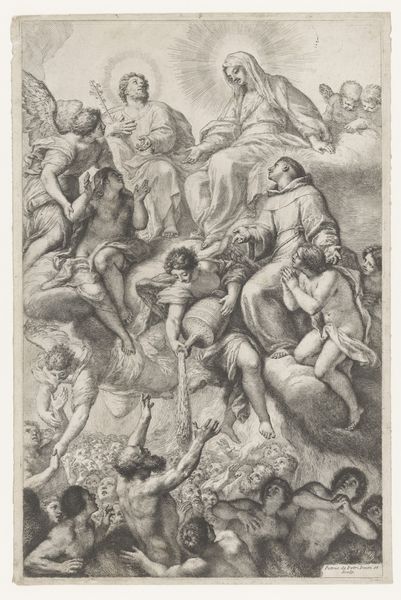
Martyrium des Heiligen Bartholomäus, darüber in Wolken die Madonna mit Kind, zu beiden Seiten die Heiligen Johannes der Täufer und Lukas, links unten eine kniende Nonne
0:00
0:00
drawing, ink, pencil, chalk
#
drawing
#
narrative-art
#
figuration
#
11_renaissance
#
ink
#
pencil drawing
#
pencil
#
13_16th-century
#
chalk
#
history-painting
#
academic-art
Copyright: Public Domain
Curator: Right now, we’re standing in front of Luca Cambiaso's drawing titled "Martyrium des Heiligen Bartholomäus, darüber in Wolken die Madonna mit Kind, zu beiden Seiten die Heiligen Johannes der Täufer und Lukas, links unten eine kniende Nonne" or in simpler terms, "The Martyrdom of St. Bartholomew". It’s currently held in the Städel Museum's collection, rendered with ink, pencil, and chalk. Editor: My initial reaction is…intense. The whole scene feels incredibly charged. The drawing seems to depict the grimmest scene, though softened a touch by the somewhat gentle touch of the artist. Curator: The composition definitely contributes to that feeling. Cambiaso was quite the draughtsman. Look at how he organizes the figures, creating a very strong contrast between the earthly violence happening to St. Bartholomew and the celestial figures looking down upon it. It’s almost like a visual representation of the divide between suffering and salvation, isn't it? Editor: Precisely. And, it really puts the viewer in an odd position. It’s hard to reconcile what you’re looking at—an act of horrendous brutality—with the kind, contemplative gaze of the Madonna. You want to look away, but then the promise of salvation compels you to hold steady. The sharp lines capture all the brutality. The faces in the crowd look evil and the saint is doing everything he can not to. It's as simple as this. Curator: Luca Cambiaso did excel at figure drawing and narrative compositions. As a history painting it presents a potent emotional narrative. His technique, you can see it throughout, feels almost mathematical at times, breaking figures down into geometric shapes. That may be one reason why his characters strike us as slightly unnatural. But, don’t you feel that somehow, it only intensifies the brutal reality playing out? Editor: I am seeing the geometrical constructs you just mentioned—now it becomes less and less of a mystery why this does feel as heavy to absorb, why so much torment seems to be bursting out of this artwork’s structure. The figures are carefully staged. The contrast between St. Bartholomew and those figures enacting such harm is strong, drawing your eye right to center before drifting to the crowd above the saint's head. In my case it looks more like he will take over everyone around. Curator: And look, the figure of the kneeling nun seems almost inconsequential, yet it anchors the viewer within a religious space. Her presence almost asks us to kneel, like her, in observance. Editor: Ultimately, for me, it's about how the artist portrays torture while at the same time, giving you something soft and holy. The formal rigor clashes directly with the brutal subject matter and, unexpectedly, creates a strong emotional reaction. Curator: Exactly. It's like a prayer illustrated on the page, or maybe an echo into Luca Cambiaso's own search to translate the emotional story through stark contrast between violence and grace. A captivating and complex piece that still speaks volumes.
Comments
No comments
Be the first to comment and join the conversation on the ultimate creative platform.
